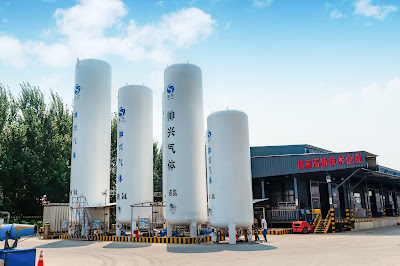Cryogenic liquid storage tank LN2 O
Cryogenic liquid nitrous oxide storage tank is a kind of equipment used to store and transport liquid nitrous oxide, which has the characteristics of high efficiency, safety and energy saving. The cryogenic liquid nitrous oxide storage tank is made of two layers of stainless steel inside and outside, and a vacuum insulation layer is filled in the middle, which can effectively reduce heat loss and evaporation. The volume of the cryogenic liquid nitrous oxide storage tank is generally between 3 cubic meters and 200 cubic meters, which can be customized according to the needs of users. The working pressure of the cryogenic liquid nitrous oxide storage tank is generally between 0.2 MPa and 3.2 MPa, which can be adjusted according to different usage occasions. The working temperature of cryogenic liquid nitrous oxide storage tanks is generally between -196 degrees Celsius and -160 degrees Celsius, which can ensure the stability and purity of liquid nitrous oxide.
Cryogenic liquid nitrous oxide storage tanks are widely used in chemical industry, metallurgy, medical treatment, food, electric power and other industries, providing a reliable source of nitrous oxide for various production and life. The cryogenic liquid nitrous oxide storage tank can also be used in conjunction with other equipment to achieve efficient use of resources and environmental protection. Cryogenic liquid nitrous oxide storage tank is an advanced, energy-saving and environmentally friendly liquid nitrous oxide storage and transportation equipment, which is worthy of the trust and choice of users.


Leachate storage tanks are specialized containers designed to hold leachate, a liquid that drains from landfills or waste sites. These tanks are typically made from materials resistant to the corrosive nature of leachate, such as high-density polyethylene. Their design varies based on the volume of leachate produced and local environmental regulations. They are essential in preventing groundwater contamination.
ReplyDelete